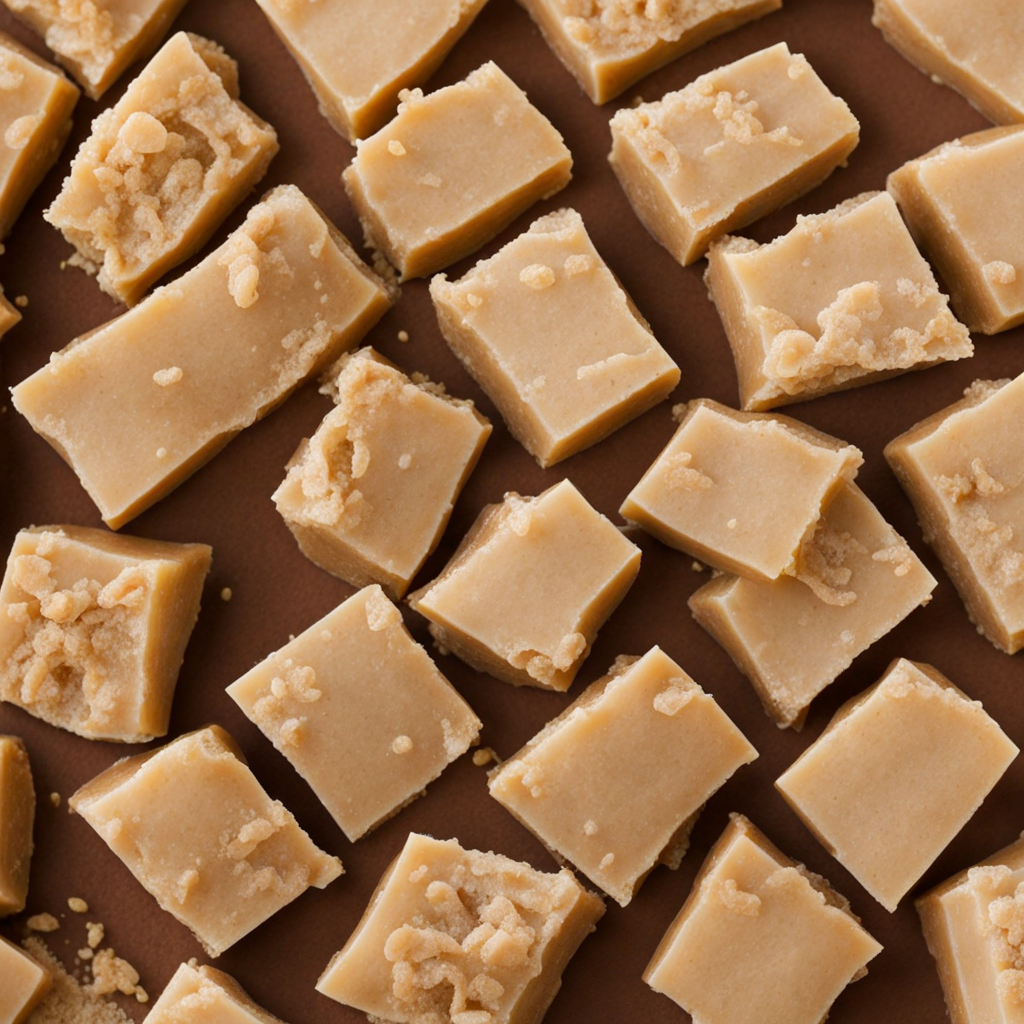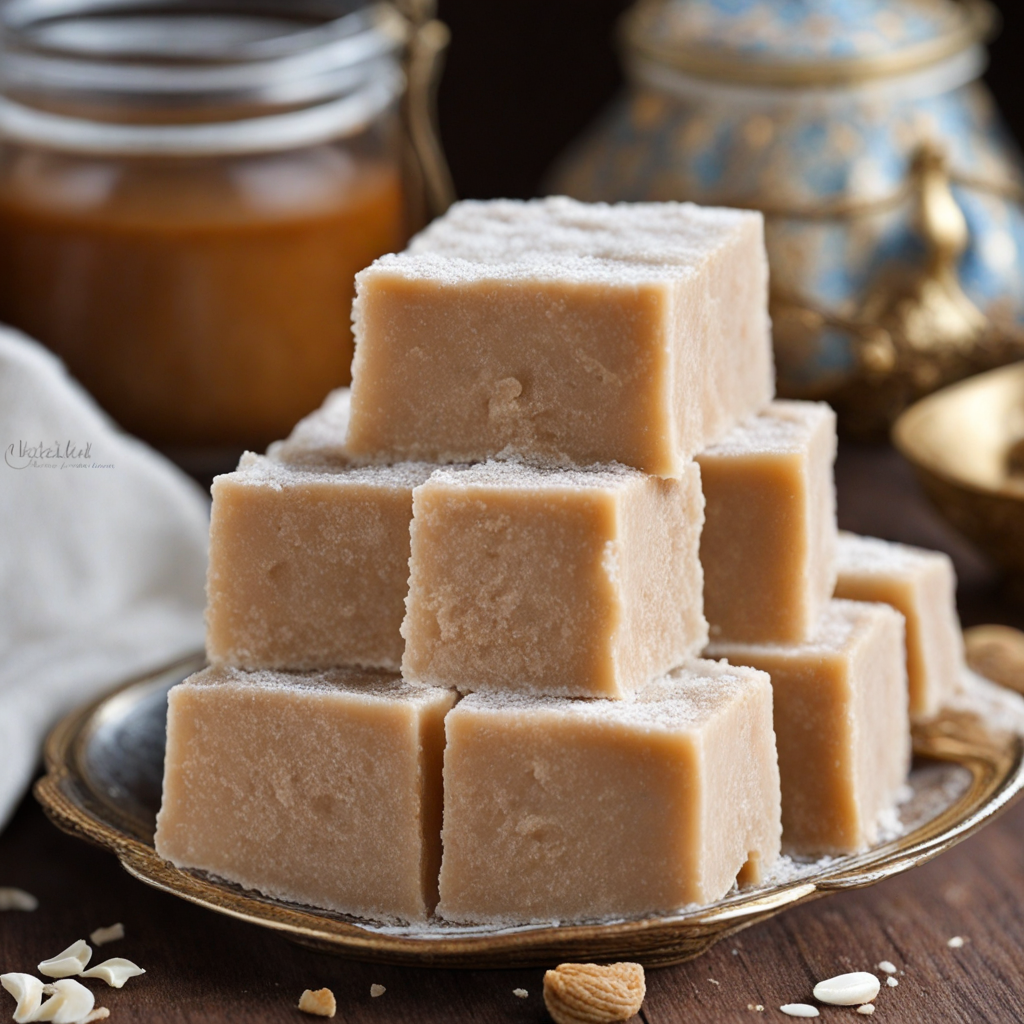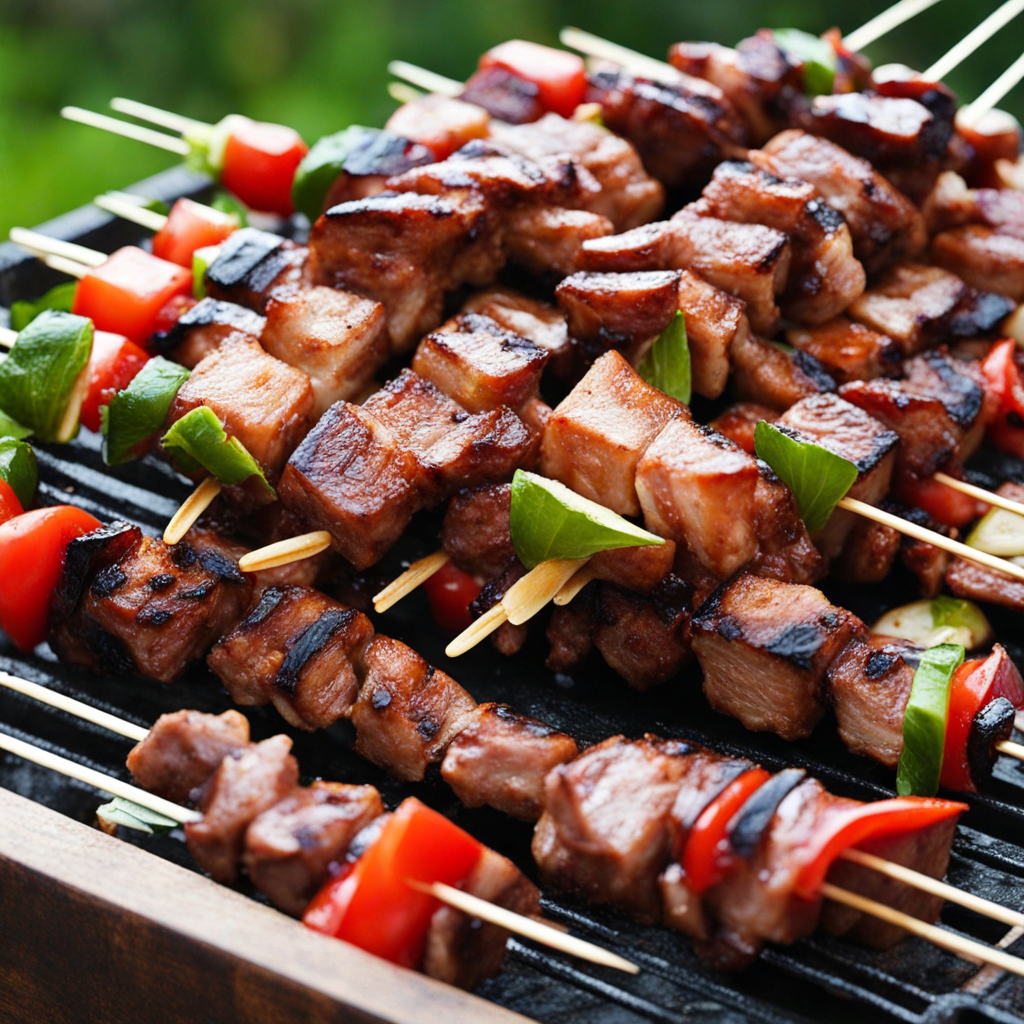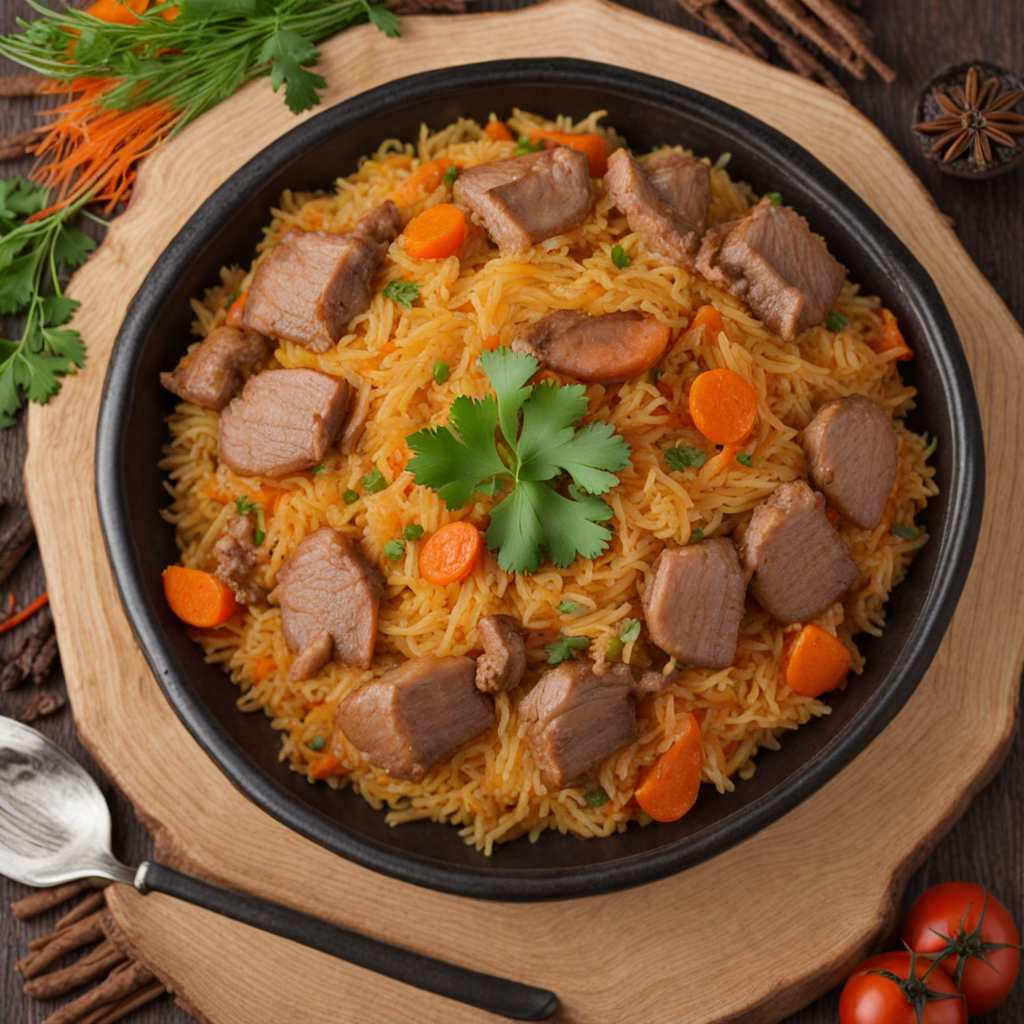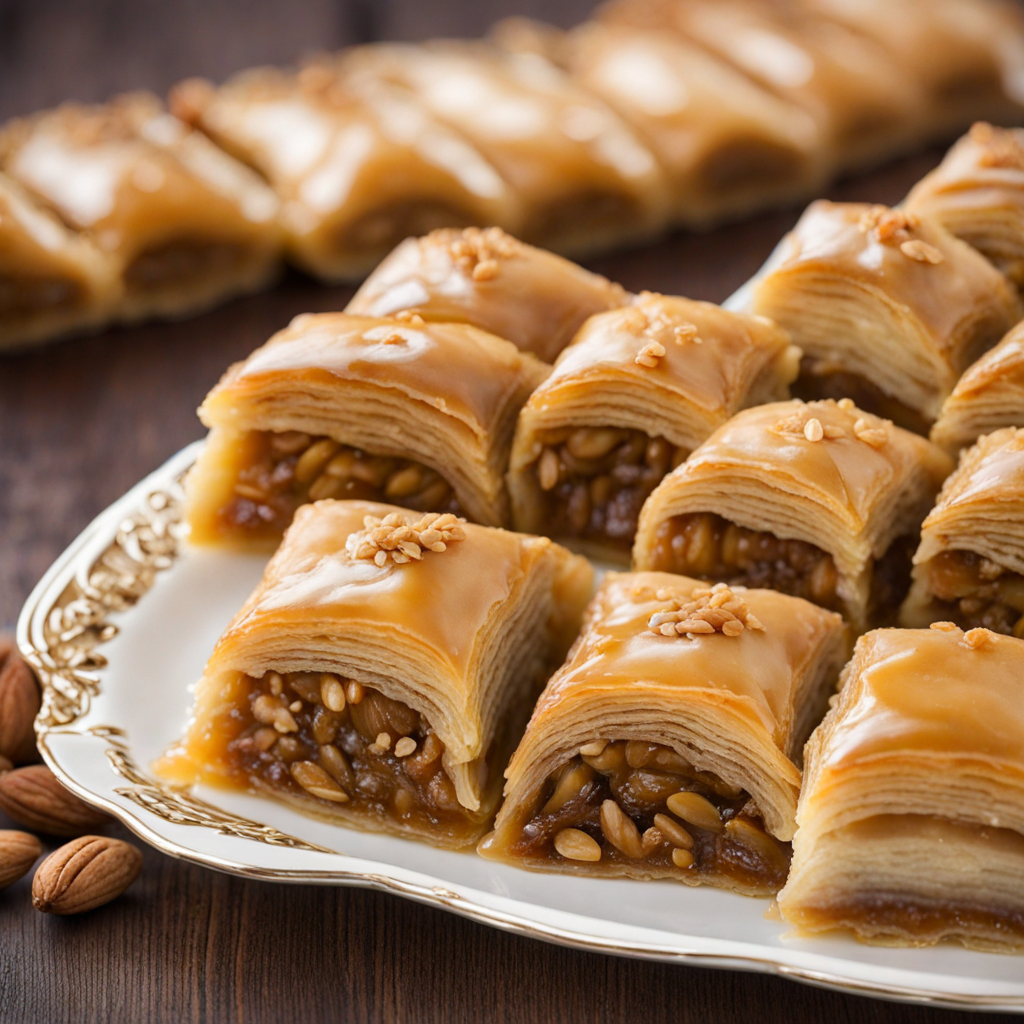Uzbek Halva
Uzbek Halva is a delightful and rich confection that embodies the culinary traditions of Uzbekistan. This sweet treat is primarily made from a base of flour, sugar, and various nuts, often incorporating ingredients like sesame seeds and chickpea flour. The unique blend of these components creates a dense, yet melt-in-your-mouth texture that distinguishes Uzbek Halva from other regional variations. The sweet, nutty aroma that wafts from freshly made halva is irresistible, drawing you in for a taste of its luscious sweetness. One of the standout features of Uzbek Halva is its versatility. It can be flavored with a variety of spices, such as cardamom, and infused with natural ingredients like rosewater or citrus zest for an aromatic lift. The addition of nuts, typically almonds, walnuts, or pistachios, not only enhances the flavor but also adds a delightful crunch, making each bite a harmonious balance of textures. Traditionally served in small squares or blocks, it is often enjoyed alongside tea or as a festive treat during celebrations, embodying the spirit of hospitality that is central to Uzbek culture. As you take your first bite of Uzbek Halva, you'll experience a wave of flavors that are both familiar and exotic. The sweet, buttery essence combined with the earthy notes of nuts creates a balanced sweetness that is not overly cloying. This confection is not just a dessert; it is a representation of the rich history and culinary artistry of Uzbekistan, inviting you to explore the vibrant culture and traditions of this Central Asian gem through its exquisite flavors.
How It Became This Dish
The Sweet Journey of Узбекская Халва: A Culinary Treasure of Uzbekistan Uzbekская Халва, or Uzbek Halva, is a traditional confectionery that encapsulates the rich culinary heritage of Uzbekistan. This delicacy, characterized by its unique texture and sweet flavor, has a history that intertwines with the cultural and social fabric of the region. To truly appreciate Uzbek Halva, we must explore its origins, cultural significance, and the evolution of this cherished treat over time. #### Origins: The Sweet Beginnings The origins of halva can be traced back to ancient civilizations, with variations found across the Middle East, Central Asia, and South Asia. The word "halva" itself is derived from the Arabic word "halwa," meaning "sweet." It is thought that halva was first made in the Middle East, with recipes spreading along trade routes to regions such as Central Asia, including Uzbekistan. Uzbek Halva, in particular, is believed to have gained prominence during the era of the Silk Road, a network of trade routes that connected the East and West. As merchants and travelers traversed these routes, they exchanged not only goods but also culinary practices. The introduction of sugar and nuts to the region during this time significantly influenced the development of halva. In Uzbekistan, the incorporation of local ingredients like wheat, sesame, and nuts such as almonds and walnuts has led to a unique interpretation of this ancient sweet. #### Cultural Significance: A Symbol of Hospitality In Uzbekistan, food is not merely sustenance; it is an integral part of cultural identity and social interactions. Halva holds a special place in Uzbek culture, often associated with hospitality and celebration. It is a customary treat during significant life events such as weddings, religious holidays, and family gatherings. Serving halva to guests is a gesture of goodwill, symbolizing abundance and generosity. The preparation of Uzbek Halva is often a communal activity, bringing families and friends together. The process involves meticulous attention to detail, usually requiring several hours of preparation. Traditional methods of making halva include roasting flour and nuts to achieve a rich flavor, mixing the ingredients with syrup made from sugar and water, and then allowing the mixture to set before cutting it into pieces. This labor-intensive process creates not only a delicious treat but also fosters a sense of togetherness among those involved. Halva is often accompanied by traditional Uzbek tea, known as "chai," further enhancing its role in social gatherings. In many Uzbek households, it is customary to offer tea and halva to guests as a sign of respect and hospitality. This practice reflects the deep-seated values of communal living and generosity that permeate Uzbek culture. #### Development Over Time: A Culinary Evolution As Uzbekistan has evolved through the centuries, so too has its cuisine, including the beloved halva. The Soviet era brought about significant changes to the culinary landscape, as traditional recipes were adapted to fit the availability of ingredients and the demands of a changing society. During this time, halva recipes in Uzbekistan diversified, with the introduction of new flavors and textures. Modern Uzbek Halva often includes variations such as "susan halva," which is made from sesame seeds, and "makkah halva," made with corn flour. These adaptations reflect the influence of globalization and the availability of diverse ingredients in contemporary Uzbekistan. The evolution of halva also mirrors the broader trends in Uzbek cuisine, which has seen a revival of traditional practices alongside the embrace of modern culinary techniques. Today, halva is not only a staple at family celebrations but also a popular street food item. Vendors selling halva can be found in bustling markets and city squares, where locals and tourists alike can enjoy this delightful treat. The increased interest in Uzbek cuisine on the global stage has also led to a resurgence of traditional recipes, with chefs experimenting with halva to create innovative desserts that honor its heritage. #### The Ingredients: A Taste of Tradition The essence of Uzbek Halva lies in its ingredients, each contributing to its distinctive flavor and texture. The base of traditional halva is often made from roasted flour, which gives it a nutty flavor. The addition of sugar syrup creates a sweet, sticky consistency, while nuts add a delightful crunch. Commonly used nuts include almonds, walnuts, and pistachios, each bringing its own unique taste and texture to the final product. Honey is sometimes used as a natural sweetener, adding depth and complexity to the flavor profile. Spices such as cardamom and cinnamon may also be incorporated, reflecting the rich spice trade that has influenced Uzbek cuisine for centuries. The careful balance of these ingredients is what makes Uzbek Halva a beloved treat, cherished for its sweetness and the warmth of its cultural associations. #### Conclusion: A Lasting Legacy Uzbekская Халва is more than just a sweet treat; it is a symbol of Uzbekistan's rich culinary heritage and cultural identity. Its origins reflect the historical exchanges along the Silk Road, while its cultural significance highlights the values of hospitality and community that are central to Uzbek life. As Uzbekistan continues to navigate the complexities of modern society, halva remains a cherished connection to the past, embodying the flavors and traditions that have been passed down through generations. Whether enjoyed at a festive occasion or shared among friends over a cup of tea, Uzbek Halva serves as a reminder of the importance of food in forging connections, celebrating heritage, and savoring the sweet moments of life. In the ever-evolving landscape of global cuisine, Uzbek Halva stands as a testament to the enduring power of tradition, inviting all who taste it to partake in the rich history and vibrant culture of Uzbekistan. As we savor this delightful confection, we not only celebrate its unique flavors but also the stories and people behind this beloved culinary treasure.
You may like
Discover local flavors from Uzbekistan


